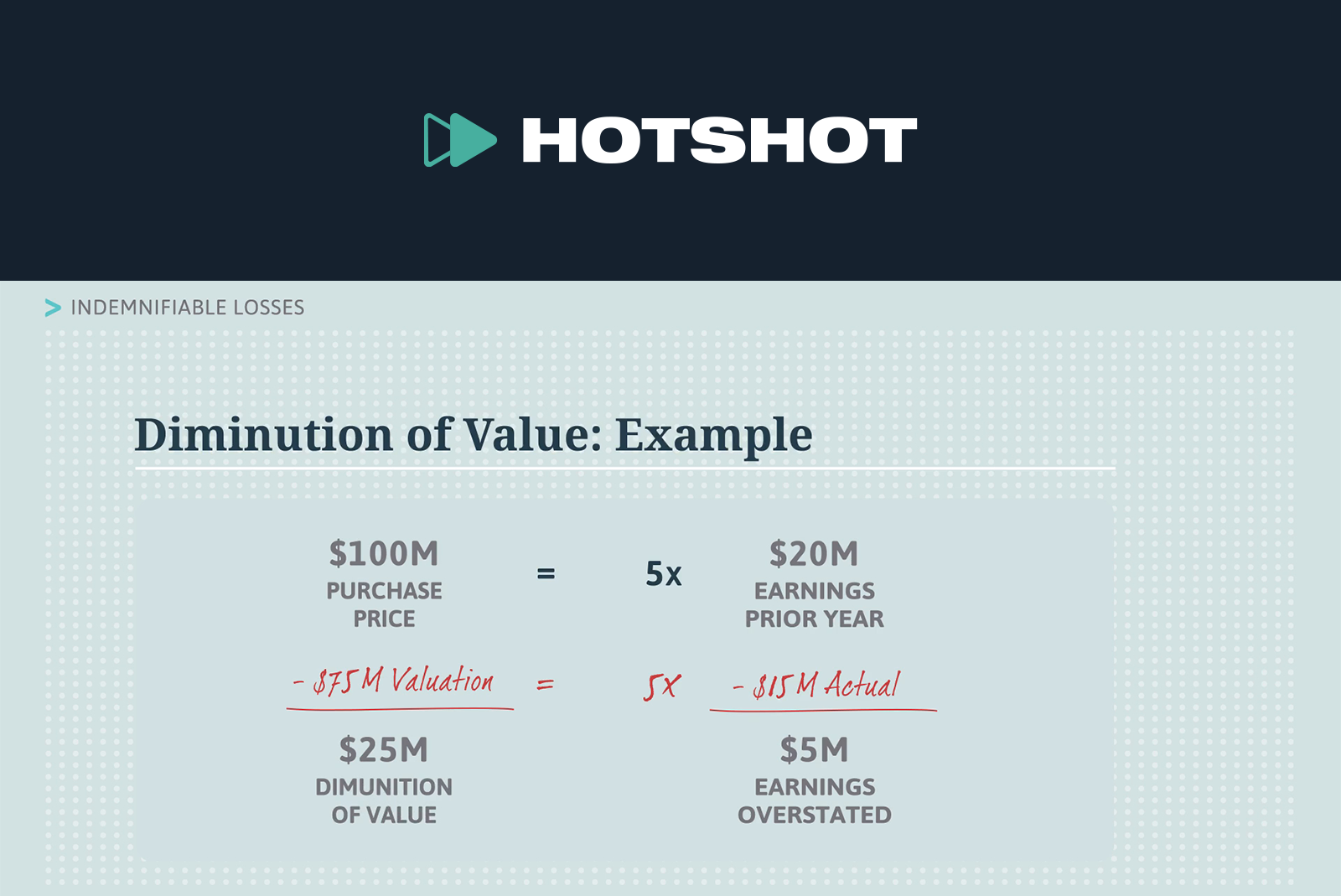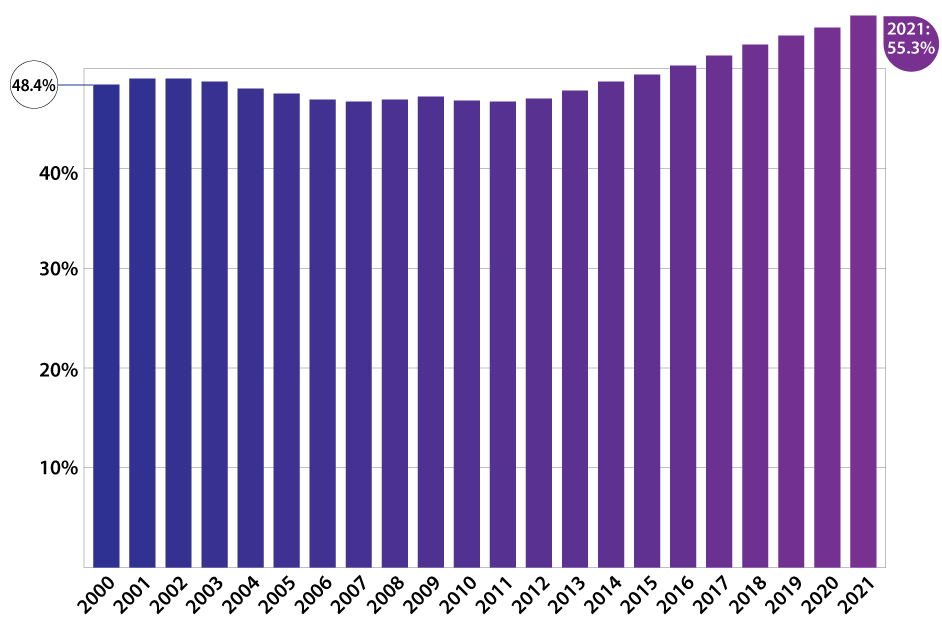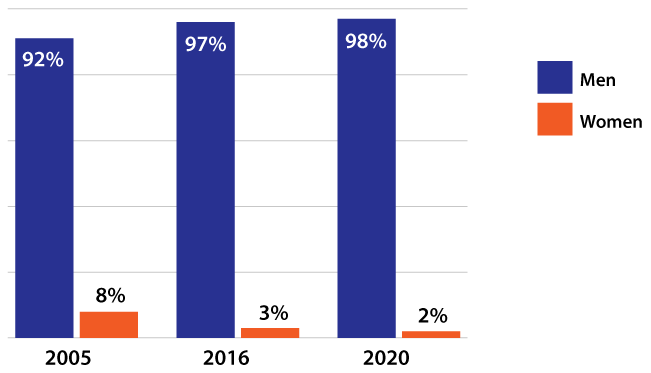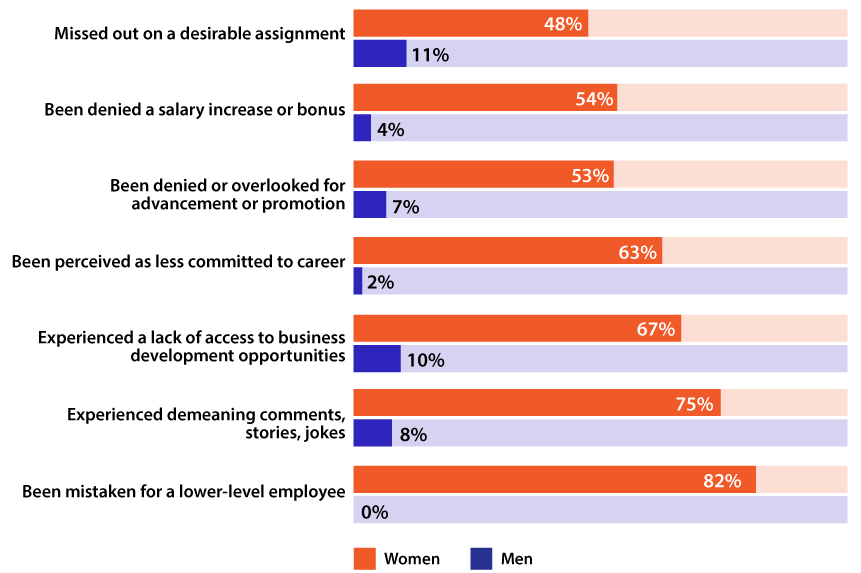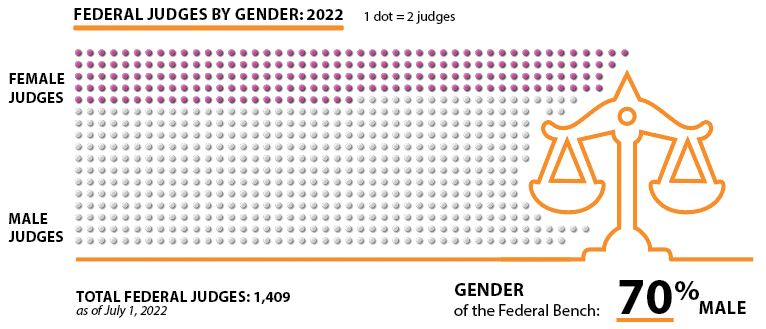
The fiduciary duties of directors of a Delaware corporation are frequently summarized as follows: “[T]he fiduciary relationship requires that the directors act prudently, loyally, and in good faith to maximize the value of the corporation over the long-term.”[1] Embedded within that formulation is a temporal element: the duty is tied to the deliberately amorphous “long term” rather than any target sooner in time.
This core tenet of Delaware corporate law—often called the “standard of conduct” because it conveys what is expected of directors—is often invoked glancingly without further explanation. But in 2013, in In re Trados Inc. Shareholder Litigation,[2] the Delaware Court of Chancery explained in detail the underpinnings of the temporal element—namely, that both the corporation and its equity capital are presumptively perpetual pursuant to the structure of the Delaware General Corporation Law (“DGCL”), which provides by default that corporations have unlimited life and that equity investments (which, unlike debt, do not have a fixed maturity) in the corporation constitute permanent capital. Due to this structure, the court reasoned, fiduciary duties oblige directors to act to maximize long-term value so that the corporation’s common stockholders (or “residual claimants”) will benefit from profits and earnings, in the form of dividends, if declared, during the life of the corporation and will be paid a theoretical maximum value upon an end-of-life scenario, such as a cash-out merger or dissolution (which involves winding up the business, liquidating, and distributing assets).
This article explores whether there is, or should be, a shift in the directors’ standard of conduct when a critical premise of Trados—presumptive perpetual existence—is missing by virtue of a provision of the corporation’s certificate of incorporation (or “charter”) that effectively imposes a deadline on the corporation’s existence, thereby creating what we refer to as a “limited-life” corporation. We first explain the logic of Trados and then apply that logic to limited-life corporations—including, for example, special purpose acquisition companies, or “SPACs,”[3] whose directors have become frequent targets of fiduciary litigation.[4] We conclude that directors of limited-life corporations, like SPACs, owe the same fiduciary duties of care and loyalty as directors of traditional corporations. But, as the Delaware courts have noted, the proper discharge of fiduciary duties is context-specific.[5] In the context of a limited-life corporation, the directors’ context-specific duties require them to maximize value not over the long term but instead within the corporation’s known life span. For that reason, if Trados is to be followed, directors of a limited-life corporation should bear in mind the shorter horizon for value maximization when determining the best interests of the corporation and its stockholders generally.
The Logic of Trados
In Trados, a venture-backed company issued preferred stock with a liquidation preference to members of management and its venture capital investors. When the company was ultimately sold, 100 percent of the merger consideration was paid to preferred stockholders in satisfaction of their contractual preference, leaving nothing for the company’s common stockholders, who challenged the merger as a breach of fiduciary duty that enriched preferred holders at the common stockholders’ expense. The Trados plaintiffs initially defeated a motion to dismiss by arguing that four of the seven directors were affiliated with funds that believed their investment in the company was heading sideways and approved the merger for the sole purpose of securing the return of their liquidation preferences (despite the fact that the common stockholders would receive no consideration) rather than continuing to operate the company (and keeping their capital at risk) in an effort to maximize value for all stockholders, including the common stockholders.[6]
In its post-trial opinion, the Trados court explained that fiduciary duties run to stockholders in their capacity as residual claimants of corporate assets, not in their capacity as holders of special contract rights (under, for example, a preferred stock instrument).[7] The court noted that this principle flows from two foundational premises of Delaware law: (1) fiduciary duties oblige directors to maximize long-term corporate value for the benefit of the corporation’s residual claimants,[8] and (2) directors are not obligated to cater to the particular preferences of any single stockholder or group of stockholders, but rather to the stockholders as a collective by maximizing the value of the corporation as a whole.[9] In light of these two premises, the court explained, “the standard of conduct for directors requires that they strive in good faith and on an informed basis to maximize the value of the corporation for the benefit of its residual claimants, the ultimate beneficiaries of the firm’s value, not for the benefit of its contractual claimants.”[10]
The first premise listed above, addressing why the standard of conduct obliges directors to maximize value over the long term, is the focus of this article. On this particular point, the court explained:
A Delaware corporation, by default, has a perpetual existence. 8 Del. C. §§ 102(b)(5), 122(1). Equity capital, by default, is permanent capital. In terms of the standard of conduct, the duty of loyalty therefore mandates that directors maximize the value of the corporation over the long-term for the benefit of the providers of equity capital, as warranted for an entity with perpetual life in which the residual claimants have locked in their investment.[11]
In a sense, this logic keys the temporal aspect of the standard of conduct to a single question: When will the corporation “cash out”[12] (so to speak) all of its stockholders? The Trados court reasoned that, by statutory default, the answer is “never” due to the structure of the DGCL, which provides by default that corporations have perpetual existence and will never face a midstream obligation to redeem or repurchase all of their capital stock.[13] Accordingly, reasoned the court, directors are obliged by default to manage the corporation in a way that strives to achieve the corporation’s maximum value asymptotically forever. With that said, the court has made clear that this is not an obligation to maintain the corporation’s existence for eternity, as directors can, and often do, conclude that the entity can grow no more and, at that point, opt to sell or dissolve the company consistent with their fiduciary duties.[14]
This is an eminently sensible way to define directors’ standard of conduct. Delaware conceives of the purpose of the corporation as maximizing firm value.[15] Firm value is tied to the amount that stockholders must receive in an end-of-life scenario because the shares of a target’s stockholders are typically converted into the right to receive consideration in mergers and Delaware’s dissolution statute requires stockholders to receive any assets remaining after the satisfaction of the corporation’s debts and other liabilities.[16] For that reason, firm value and the amount due to residual claimants are linked such that increasing the latter will generally increase the former.[17] In short, tying fiduciary duties to the value owed to residual claimants harmonizes the standard of conduct with the purpose of the corporation itself.
Applying the Logic of Trados to Limited-Life Corporations
General Theory
The foregoing discussion raises the following question: What happens to the temporal element of the standard of conduct if the premise of perpetual life is no longer present? As a practical matter, that premise routinely falls away because corporate existence can and does end in various ways, including by merger, dissolution, or expiration of an end-of-life date in a corporation’s charter.[18] How does the temporal element of the standard of conduct change (if at all) in these circumstances, and in particular for limited-life corporations?
Under the logic of Trados, directors should focus on the moment in time at which residual claimants must be paid the corporation’s residual value. The temporal target therefore shifts from value maximization “over the long term” to “as of the corporation’s known end date.” Although the core duty to maximize value remains the same, the standard of conduct obliges directors to strive to do so before the proverbial bell tolls. Why? Because that is the course that will maximize value for residual claimants at the fixed deadline.
This conclusion finds support in the merger context under legal principles set forth in both Trados itself and in the so-called Revlon context, where the directors’ duties shift, in a sale of control, to maximizing value in the short term. The Trados court observed: “When deciding whether to pursue a strategic alternative that would end or fundamentally alter the stockholders’ ongoing investment in the corporation, the loyalty-based standard of conduct requires that the alternative yield value exceeding what the corporation otherwise would generate for stockholders over the long-term.”[19] Relatedly, past cases provide that “it is clear that under Delaware law, directors are under no obligation to act so as to maximize the immediate value of the corporation or its shares, except in the special case in which the corporation is in a ‘Revlon mode.’”[20] Considered together, these two principles of law suggest that the temporal element of the standard of conduct is in some sense bifurcated, providing, respectively, that (1) directors must always seek to maximize the long-term (i.e., terminal) value of the corporation regardless of the circumstance, but (2) while directors have eternity to do so by default, they must do so on a more urgent basis in an end-of-life scenario. The first factor asks “what” (value that directors must strive to achieve) and the second asks “when” (directors must achieve it). The “what” is invariable, but the “when” (which is the focus of this article) changes in merger scenarios.
The “when” should change in other end-of-life scenarios aside from mergers.[21] Under the foregoing precedents, the directors of limited-life corporations arguably owe fiduciary duties to maximize the terminal value of the corporation for the benefit of its residual claimants during the corporation’s known life span. Again, the “what” remains the same, but the “when” changes: while directors of limited-life corporations must strive to deliver what they believe to be the corporation’s terminal value, they must strive to do so before the termination date arrives rather than under the freedom of a perpetual time horizon.
The court’s opinion in New Enterprise Associates 14, L.P. v. Rich[22] provides additional support for this conclusion. In that case, the court explained that parties can “tailor” the fiduciary standard of conduct applicable to directors by appropriate provision in the corporation’s certificate of incorporation.[23] The court began by observing that general corporation laws like the DGCL delegate (at least in a sense) sovereign power to the citizenry:
The creation of a body corporate through the issuance of a charter constitutes an exercise of state authority, equivalent in its efficacy to the enactment of a statute (notwithstanding the now longstanding practice of the state approving charters under a general incorporation law). Through the issuance of a charter, the state creates an otherwise impossible being—an artificial person—capable of exercising the powers conferred by the state and with the limitations that the state wishes to impose. To use the charter to modify the duties attendant to that state-created relationship, parties should need express authority from the state.[24]
The court reasoned that the Delaware General Assembly has in fact exercised such “express authority” in multiple DGCL provisions[25]—including, perhaps most relevant here, section 102(a)(3) of the DGCL, which requires the certificate of incorporation to set forth “[t]he nature of the business or purposes to be conducted or promoted.”[26] Purpose clauses can be drafted in broad and general terms, authorizing, for example, the corporation to conduct any lawful act or activity,[27] or they may be drafted narrowly, in a manner that circumscribes the corporation’s objects and purposes, directing it, for example, to pursue specific lines of business or objectives (and, by implication, imposing the risk that acts outside those specific lines or not in furtherance of those objectives will be ultra vires). Along those lines, in New Enterprise Associates, while directors of corporations with general purpose clauses and perpetual existence owe fiduciary duties to maximize the entity’s long-term value,[28] directors managing an entity with a limited purpose and duration are duty bound not to pursue profit maximization over the long term if doing so subverts the purpose identified. This is but one example of a DGCL provision held to enable corporate planners to reorient fiduciary focus.[29]
The DGCL’s limited-life provision (section 102(b)(5))[30] operates in a similar fashion, constraining the corporation in a way that necessarily affects the contextual duties of its fiduciaries. While the New Enterprise Associates court did not specifically identify section 102(b)(5) as a means of fiduciary tailoring, any limitation on duration, like a limitation on the corporation’s objects and purposes, will alter the default standard of conduct pursuant to which directors are guided to pursue profit maximization in the long-term best interests of the stockholders. Accordingly, limited-duration provisions necessarily (and permissibly) have the effect of tailoring the fiduciary standard of conduct in the manner described above.
Practical Application: SPACs
This precept has important implications for directors of limited-life corporations, including SPACs, which typically must dissolve within eighteen to twenty-four months after the corporation’s initial public offering.[31] Because the SPAC itself generally has no business operations and exists for the limited purpose of identifying acquisition targets and effecting a business combination, typically as an alternate means of taking a private company public, directors’ overarching value-maximization duty obliges them to seek out a business combination that will yield greater value to the SPAC’s stockholders than the fixed amount they would otherwise receive in a redemption scenario, as (if a target whose value exceeds per-share redemption value exists) that is the course that will deliver the most value to residual claimants at the time at which they otherwise must be paid in a mass cash-out upon the occurrence of the charter-imposed termination date.[32]
For that reason, although “rushing” is often used as a pejorative by stockholder plaintiffs challenging directors’ consideration of a merger,[33] acting with appropriate speed may often be precisely what SPAC directors’ fiduciary duties require of them. As established above, proper discharge of fiduciary duties depends on context such that different value-maximizing steps may be appropriate depending on what the situation requires. Thus, in the SPAC context, there is neither a general “duty to rush” nor a general duty to turn over every stone by expending the SPAC’s entire eighteen- to twenty-four-month life span searching for a suitable target. Rather, variable factual circumstances can and should influence directors’ approach to, and degree of alacrity in, locating a target such that proper adherence to the standard of conduct will depend on the unique factual nuances at play.
With that said, SPAC directors oftentimes must act with deliberate speed due to the nature of the entity they helm. SPACs are formed with the specific purpose of acquiring a private company that meets the criteria set forth in its charter (which commonly requires the target’s fair value to meet or exceed 80 percent of the cash held in the SPAC’s trust account) within eighteen to twenty-four months, and locating and consummating a transaction can take a long time. SPAC directors must, among other things, retain advisors, collect information on potential targets, conduct diligence on targets’ business models and operations, conduct diligence on targets’ financials (a project often complicated by private targets’ lack of public company financial reporting conventions), negotiate a term sheet, negotiate a merger agreement, negotiate ancillary agreements, approve and adopt the transaction documents, convene a stockholder meeting to approve the transaction, allow any necessary government approval processes to conclude, and close the transaction. Each of these steps takes time, which in turn imposes an important practical constraint on SPAC boards: they cannot, within eighteen to twenty-four months, conduct an exhaustive review of an essentially limitless group of potential targets. Rather, both SPAC boards and SPAC stockholders understand that the board’s practical charge is to make rational judgments to narrow the field of potential targets to an actionable number that in turn enables a transaction to close within the SPAC’s life span.
Because SPAC investors understand these practical realities, challenges to SPAC mergers on grounds that the board acted quickly reflect internal logical tension: stockholders who seemingly signed up for a fast acquisition process by investing in the SPAC in the first instance challenge a transaction on grounds that it proceeded at precisely the pace they expected. For example, in Richards v. QuantumScape Corp.,[34] a stockholder challenged a SPAC merger in part on grounds that the SPAC’s board was “highly motivated to acquire a company on a quick timeframe.” Similarly, a stockholder-plaintiff in Polisher v. Lottery.com, Inc. impugned a SPAC board for “push[ing] through the [transaction] at lightning-fast speed.”[35] It is not reasonable to infer from these sorts of bald rushing allegations that directors acted carelessly in violation of the standard of conduct. Not only do foundational precepts of Delaware law suggest that moving with alacrity is appropriate in this context, but rushing allegations ignore that the plaintiffs, by investing in a limited-life corporation, signed up for a twenty-four-month race to maximize the value of their shares the moment that they bought them. The better inference, based on both the SPAC’s certificate of incorporation and the practical realities of mergers and acquisitions (M&A) practice, is that acting with suitable speed evidences proper discharge of directors’ fiduciary duties.
This intuition has an important implication in M&A litigation: courts deciding pleading-stage dispositive motions generally should not infer fiduciary misconduct from a bald allegation that directors rushed to complete a transaction. Although the procedural standard applicable to resolving motions to dismiss is plaintiff-friendly under Delaware law, it only requires the court to give the plaintiff the benefit of reasonable inferences.[36] For reasons described above, it is not reasonable to infer fiduciary misconduct from fast action per se.
Three recent decisions from the Delaware Court of Chancery provide a useful template to illustrate how this precept might operate in M&A litigation. In each of In re MultiPlan Corp. Stockholders Litigation, Delman v. GigAcquisitions3, LLC,[37] and Laidlaw v. GigAcquisitions2, LLC,[38] a stockholder-plaintiff sued SPAC directors for approving an acquisition that, according to the plaintiff, overvalued the target company. In each case, the Court of Chancery held at the pleading stage that the entire fairness standard of review applied,[39] thereby requiring the court to assess (1) whether the complaint stated a claim that the transaction was not entirely fair by virtue of the price that each SPAC paid and the process that each SPAC’s board employed before consummating it[40] and (2) whether the complaint pled nonexculpated fiduciary misconduct by each director-defendant sufficient to keep them in the lawsuit.[41] To support these two points, the plaintiffs in these three cases did not argue that the board rushed—but plaintiffs in cases like QuantumScape and Lottery.com did, and plaintiffs in similar future suits might. So, the argument goes, rushing supports point (1) on grounds that it evidences an unfair process and point (2) on grounds that it suggests directors breached their fiduciary duties. But, as we have explained, neither inference is reasonable without more because the standard of conduct obliges SPAC directors to maximize value as of the SPAC’s known termination date, which oftentimes may require fast action to find and acquire a suitable target in time.
Conclusion
The logic of Trados creates substantial arguments that the fiduciary standard of conduct required of directors of limited-life corporations differs from that of directors managing perpetual ones. Trados ties the temporal element of fiduciary duties to the moment in time at which residual claimants must be paid. By default, that moment will never arrive, and thus the temporal element will be the unreachable “long term” in most cases. But for corporations with a known termination date, like SPACs, the temporal element should advance in kind both by logical extension and under the New Enterprise Associates precept that certain charter provisions necessarily (and permissibly) reorient fiduciary focus. In our view, bald allegations that directors of a limited-life corporation “rushed” through a sale process, in and of itself, should not give rise to a reasonable inference that the process was flawed. Rather, because the duty is to maximize value within a specified time horizon, the reasonable inference from fast action should be that directors observed the context-specific duties imposed on them. Reframing of the standard of conduct in this manner should help to eliminate noise in cases involving limited-life corporations where plaintiffs attempt to assert process-based challenges that might arguably apply in the default setting but do not operate similarly in limited-life contexts.
John Mark Zeberkiewicz is a director and Brian T.M. Mammarella is an associate of Richards, Layton & Finger, P.A. Their practice focuses on transactional matters involving Delaware corporations, including mergers and acquisitions, corporate governance, and corporate finance. The views expressed in this article are those of the authors and not necessarily those of Richards, Layton & Finger, P.A., or its clients.
Frederick Hsu Living Tr. v. ODN Holding Corp., 2017 WL 1437308, at *18 (Del. Ch. Apr. 14, 2017). ↑
73 A.3d 17 (Del. Ch. 2013). ↑
The Delaware Court of Chancery has summarized the nature and organizing purpose of SPACs as follows:
A SPAC—also called a blank check company—is a publicly traded company that raises capital through an initial public offering to realize a single goal: merge with a private company and take it public. Unlike most companies that go public, a SPAC has no operations and its assets are effectively limited to its IPO proceeds. SPACs are often formed and controlled by an individual or management group, referred to as the SPAC’s “sponsor.” The sponsor’s primary job is to identify a target for a “de-SPAC” merger.
In re MultiPlan Corp. S’holders Litig., 268 A.3d 784, 793 (Del. Ch. 2022) (footnotes omitted). ↑
E.g., Laidlaw v. GigAcquisitions2, LLC, 2023 WL 2292488 (Del. Ch. Mar. 1, 2023) (opinion addressing plenary action against SPAC directors for breach of fiduciary duty); Delman v. GigAcquisitions3, LLC, 288 A.3d 692 (Del. Ch. 2023) (same); In re MultiPlan Corp. S’holders Litig., 268 A.3d 784 (same); Complaint, Farzad v. Gores Sponsor IV LLC, No. 2023-0386 (Del. Ch. Mar. 31, 2023) (complaint asserting plenary claims for breach of fiduciary duties against SPAC directors); Complaint, Delman v. Gores Sponsor IV LLC, No. 2023-0284-LWW (Del. Ch. Mar. 10, 2023) (same); Complaint, Delman v. Riley, No. 2023-0293-LWW (Del. Ch. Mar. 13, 2023) (same); Complaint, McKnight v. All. Ent. Holdings Corp., No. 2023-0383-LWW (Del. Ch. Mar. 31, 2023) (same); Complaint, Weisheipl v. Rosenberg, No. 2023-0395-MTZ (Del. Ch. Apr. 3, 2023) (same); Complaint, Solak v. Mountain Crest Cap. LLC, No. 2023-0469-SG (Del. Ch. Apr. 28, 2023) (same); Complaint, Kilari v. TS Innovation Acquisitions Sponsor LLC, No. 2023-0509-LWW (Del. Ch. May 9, 2023) (same); Complaint, Subramanian v. TS Innovation Acquisitions Sponsor LLC, No. 2023-0514-LWW (Del. Ch. May 10, 2023) (same); Complaint, Newman v. Sports Ent. Acquisition Holdings LLC, No. 2023-00538-LWW (Del. Ch. May 18, 2023) (same); Complaint, Lindsey v. Quiroga, No. 2023-0674-PAF (Del. Ch. June 30, 2023) (same); Complaint, Bushansky v. GigAcquisitions4 LLC, No. 2023-0685-LWW (Del. Ch. July 5, 2023) (same); Complaint, Murray v. Moglia, No. 2023-0737-PAF (Del. Ch. July 20, 2023) (same); Complaint, Ihle v. Brombach, No. 2023-0759-LWW (Del. Ch. July 25, 2023) (same); Complaint, Offringa v. dMY Sponsor II LLC, No. 2023-0929 (Del. Ch. Sept. 12, 2023) (same); Complaint, Gatto v. Volta Inc., No. 2023-0378 (Del. Ch. Mar. 30, 2023) (seeking to inspect a former SPAC’s books and records to investigate wrongdoing in connection with the SPAC’s business combination transaction); Complaint, Richards v. QuantumScape Corp., No. 2022-0394-JTL (Del. Ch. May 5, 2022) (same); Complaint, Polisher v. Lottery.com, Inc., No. 2023-0242 (Del. Ch. Feb. 24, 2023) (same); Complaint, Gomez v. Berkshire Grey Inc., No. 2023-0724 (Del. Ch. July 18, 2023) (same); Complaint, Serven v. Greenlight Bioscis. Holdings PBC, No. 2023-0728 (July 18, 2023) (same); Complaint, Bryant v. MoneyLion Inc., No. 2023-0739-BWD (Del. Ch. July 20, 2023) (same). ↑
Malone v. Brincat, 722 A.2d 5, 10 (Del. 1998) (“Although the fiduciary duty of a Delaware director is unremitting, the exact course of conduct that must be charted to properly discharge that responsibility will change in the specific context of the action the director is taking with regard to either the corporation or its shareholders.”); accord In re McDonald’s Corp. S’holder Derivative Litig., 289 A.3d 343, 369 (Del. Ch. 2023) (same). ↑
In re Trados Inc. S’holder Litig., 2009 WL 2225958, at *1 (Del. Ch. July 24, 2009) (“[P]laintiff has alleged facts sufficient, at this preliminary stage, to demonstrate that at least a majority of the members of Trados’ seven member board were unable to exercise independent and disinterested business judgment in deciding whether to approve the merger.”). Notably, the plaintiffs also challenged the board’s adoption of a management carve-out plan that effectively allocated proceeds of the merger to management, thus providing them an incentive to complete the transaction favored by the preferred stockholders. Id. ↑
LC Cap. Master Fund, Ltd. v. James, 990 A.2d 435, 448–49 (Del. Ch. 2010) (“When, by contract, the rights of the preferred in a particular transactional context are articulated, it is those rights that the board must honor. To the extent that the board does so, it need not go further and extend some unspecified fiduciary beneficence on the preferred at the expense of the common. When, however, . . . there is no objective contractual basis for treatment of the preferred, then the board must act as a gap-filling agency and do its best to fairly reconcile the competing interests of the common and preferred.”). ↑
In re Trados Inc. S’holder Litig., 73 A.3d 17, 37 (Del. Ch. 2013). ↑
See Frederick Hsu Living Tr. v. ODN Holding Corp., 2017 WL 1437308, at *17 (Del. Ch. Apr. 14, 2017) (“[U]nder Delaware law, for directors to act loyally to advance the best interests of the corporation means that they must seek ‘to promote the value of the corporation for the benefit of its stockholders.’ In a world with many types of stock . . . the question naturally arises: which stockholders? The answer is the stockholders in the aggregate in their capacity as residual claimants, which means the undifferentiated equity as a collective, without regard to any special rights.” (footnotes omitted)); J. Travis Laster & John Mark Zeberkiewicz, The Rights and Duties of Blockholder Directors, 70 Bus. Law. 33, 49 (2015) (“At their core, a director’s fiduciary duties require that the director act prudently and in good faith ‘to promote the value of the corporation for the benefit of its stockholders.’ The reference to ‘stockholders’ means all of the corporation’s stockholders as a collective. It means the stockholders as a whole, without reference to any of their special contractual rights, which is what academics refer to as the ‘single owner standard.’” (footnotes omitted)). ↑
Trados, 73 A.3d at 40–41. The court went on to reason that preferred holders are only owed fiduciary duties in their capacity as holders of undifferentiated equity, not in their capacity as holders of special, unique contract rights set forth in a preferred instrument not shared generally with stockholders. Id.; see supra note 7 and accompanying text. ↑
Trados, 73 A.3d at 37–38 (emphasis added). This reasoning has been both endorsed by the Delaware Supreme Court and applied to Delaware limited liability companies. United Food & Com. Workers Union v. Zuckerberg, 2021 WL 4344361, at *19 n.193 (Del. Sept. 23, 2021) (citing with approval the notion that “the fiduciary relationship requires that the directors act prudently, loyally, and in good faith to maximize the value of the corporation over the long-term for the benefit of the providers of presumptively permanent equity capital, as warranted for an entity with a presumptively perpetual life in which the residual claimants have locked in their investment”); Glidepath Ltd. v. Beumer Corp., 2019 WL 855660, at *19 (Del. Ch. Feb. 21, 2019) (“By default, a Delaware LLC exists perpetually—from formation until cancellation. Consequently, unless their fiduciary duties are eliminated or modified, the fiduciaries who control a Delaware LLC must strive to maximize the value of the LLC over a long-term horizon, as warranted for an entity with a presumptively perpetual life.”). ↑
We use the phrase cash out for convenience, but it is intended to capture a wider array of liquidity events that deliver value in various forms, as the Trados court explicitly acknowledged: “Value, of course, does not just mean cash. It could mean an ownership interest in an entity, a package of other securities, or some combination, with or without cash, that will deliver greater value over the anticipated investment horizon.” Trados, 73 A.3d at 38–39. ↑
Indeed, section 151(b) of the DGCL forbids corporations from completing redemptions that would wipe out all voting stock (subject to exceptions). Del. Code Ann. tit. 8, § 151(b). But see 2 David A. Drexler et al., Delaware Corporation Law and Practice § 17.01[2] (2022) (observing that “transfer restrictions authorized by [Del. Code Ann. tit. 8, § 202] may be, in effect, indistinguishable from the grant of a right of redemption to the holders of the common stock”). ↑
ODN, 2017 WL 1437308, at *19 (“[A] duty to maximize long-term value does not always mean acting to ensure the corporation’s perpetual existence.”). ↑
E.g., id. at *17 (“Delaware case law is clear that the board of directors of a for-profit corporation . . . must, within the limits of its legal discretion, treat stockholder welfare as the only end, considering other interests only to the extent that doing so is rationally related to stockholder welfare.” (quoting Leo E. Strine Jr., A Job Is Not a Hobby: The Judicial Revival of Corporate Paternalism and Its Problematic Implications, 41 J. Corp. L. 71, 107 (2015))). ↑
See Del. Code Ann. tit. 8, §§ 251(b)(5), 281. Delaware law provides that the only other conceivable end-of-life event, conversion, neither requires payment to stockholders nor ends the company’s existence. Id. § 266(h). Other end-of-life events, such as revocation of a delinquent corporation’s charter by the secretary of state and subsequent termination proceedings, are not relevant for present purposes because they do not involve director action. Id. §§ 509, 511. ↑
ODN, 2017 WL 1437308, at *17 (“Decisions [that produce greater profits over the long term] benefit the corporation as a whole, and by increasing the value of the corporation, the directors increase the quantum of value available for the residual claimants.”). We acknowledge that increasing firm value may not increase amounts paid to stockholders in some dissolution scenarios, including where amounts due to creditors would swallow the amount of the increase. ↑
See supra note 16. Note that corporate existence does not end upon dissolution or expiration of an end-of-life date, both of which instead trigger a period of at least three years during which the corporation continues to exist for the purpose of winding up its affairs and liquidating and distributing its assets. Only after the windup expires does the corporation cease to exist (subject to limited exceptions). See Del. Code Ann. tit. 8, §§ 278, 280, 281; cf. In re Krafft-Murphy Co., Inc., 82 A.3d 696, 705–07 (Del. 2013) (holding that “the expiration of [the windup period] does not extinguish the dissolved corporation’s liability” to claimants who sue after the corporation has ceased to exist because although the DGCL’s safe-harbor provisions protect directors and stockholders from certain claims and time-bar other types of claims, the DGCL does not purport to eliminate liability of the corporation itself). ↑
In re Trados Inc. S’holder Litig., 73 A.3d 17, 37 (Del. Ch. 2013) (emphasis added). ↑
Paramount Commc’ns Inc. v. Time Inc., 1989 WL 79880, at *19 (Del. Ch. July 14, 1989) (Allen, C.), aff’d, 571 A.2d 1140 (Del. 1989) (emphasis added). “[A]bsent a limited set of circumstances as defined under Revlon, a board of directors, while always required to act in an informed manner, is not under any per se duty to maximize shareholder value in the short term, even in the context of a takeover.” Paramount Commc’ns Inc., 571 A.2d at 1150. ↑
The fact that Revlon does not apply to a board’s decision to dissolve does not change this analysis because Revlon is a standard of review, not a standard of conduct. Energy Fund v. Gershen, 2016 WL 5462958 (Del. Ch. Sept. 29, 2016) (holding that Revlon does not apply to a board’s decision to dissolve); In re USG Corp. S’holder Litig., 2020 WL 5126671, at *28 (Del. Ch. Aug. 31, 2020) (“Describing the duties of directors in way of a control transaction as ‘Revlon duties,’ to my mind, is something of a misnomer; the fiduciary duties are loyalty and care, in any situation—the specific situation, however, dictates the actions required for fulfilment of those duties.”). See generally J. Travis Laster, Revlon Is a Standard of Review: Why It’s True and What It Means, 19 Fordham J. Corp. & Fin. L. 5 (2013). That is because directors must always strive to maximize the corporation’s value, and Revlon only asks whether directors acted reasonably in striving to do so in change-of-control scenarios. Simply put, Revlon does not dictate the standard of conduct. ↑
295 A.3d 520 (Del. Ch. 2023). ↑
Id. at 529 (recognizing that “fiduciary duties can be tailored”). ↑
Id. at 543 (emphasis added). ↑
Id. at 553–54; see also id. at 542 (“[I]f the General Assembly has authorized provisions in the constitutive documents of an entity that eliminate or modify the fiduciary duty regime, then a court will enforce them. Otherwise, practitioners cannot use the constitutive documents of an entity for that purpose.”). ↑
Id. at 554 (“[A] limited purpose clause effectively modifies the orientation of the directors’ fiduciary duties.”). ↑
Section 102(a)(3) expressly authorizes the charter to provide a provision of this sort:
It shall be sufficient to state, either alone or with other businesses or purposes, that the purpose of the corporation is to engage in any lawful act or activity for which corporations may be organized under the General Corporation Law of Delaware, and by such statement all lawful acts and activities shall be within the purposes of the corporation, except for express limitations, if any.
Del. Code Ann. tit. 8, § 102(a)(3). ↑
295 A.3d at 544 (“Absent a narrow purpose clause, corporate directors have an obligation to seek to maximize the long-term value of the corporation for the benefit of its stockholders.”). ↑
See id. at 549–61 (discussing six other DGCL provisions that permit fiduciary tailoring); cf. In re McDonald’s Corp. S’holder Derivative Litig., 289 A.3d 343, 369 (Del. Ch. 2023) (observing that fiduciary duties are flexible and responsive to the specific context surrounding each decision that fiduciaries make). ↑
Del. Code Ann. tit. 8, § 102(b)(5). ↑
A sample limited-life provision in a SPAC charter reads as follows:
In the event that the Corporation has not consummated an [sic] Business Combination within the Completion Window, the Corporation shall (i) cease all operations except for the purpose of winding up, (ii) as promptly as reasonably possible but not more than ten business days thereafter subject to lawfully available funds therefor, redeem 100% of the Offering Shares in consideration of a per share price, payable in cash, equal to [consideration formula], and (iii) as promptly as reasonably possible following such redemption, subject to the approval of the remaining stockholders and the Board in accordance with applicable law, dissolve and liquidate, subject in each case to the Corporation’s obligations under the DGCL to provide for claims of creditors and other requirements of applicable law.
N. Mountain Merger Corp., Amended and Restated Certificate of Incorporation (Sept. 21, 2020) (ex. 3.1 to current report (Form 8-K)). ↑
Section 102(b)(5) of the DGCL provides that the charter may contain “[a] provision limiting the duration of the corporation’s existence to a specified date.” Del. Code Ann. tit. 8, § 102(b)(5). We acknowledge that SPAC charters do not purport to limit the corporation’s existence to a “specific date” but rather oblige the corporation to dissolve as promptly as reasonably possible after expiration of the above-referenced completion window and the mandatory redemption of public shares occurs. E.g., supra note 31 and accompanying text. We further acknowledge that the charter can be amended to extend the completion window at any time as long as both the directors and the stockholders consent. See Del. Code Ann. tit. 8, § 242. Nonetheless, mandatory, time-triggered dissolution provisions in SPAC charters should animate the same standard-of-conduct analysis as traditional limited-life provisions because both alter the default of perpetual existence by providing a target beyond which the corporation may no longer conduct the business that the corporation was formed to pursue. Further, the possibility of charter amendments should not alter the analysis for several reasons. First, the standard of conduct focuses on director action, and directors cannot unilaterally amend the charter (subject to exceptions not relevant here). Id. § 242(b). Moreover, Trados keyed the temporal element of the standard of conduct to the corporation’s contemporaneously prevailing (there, the DGCL default) life span, not hypothetical alternative life spans. As we have argued, the temporal element of the standard of conduct should be responsive to any new condition affecting corporate life—be it an imminent merger, imminent dissolution, or a known termination date—when it manifests and not before. ↑
See infra notes 34–35 and accompanying text; see also Complaint ¶ 74, Ihle v. Brombach, No. 2023-0759-LWW (Del. Ch. July 25, 2023) (“Upon information and belief, Plaintiff alleges that the Proxy overstates the extent of the Company’s evaluation of potential targets other than Legacy Core Scientific, as Defendants quickly identified Core Scientific as the Company’s preferred target.”); Complaint ¶¶ 39–41, Murray v. Moglia, No. 2023-0737-PAF (Del. Ch. July 20, 2023) (alleging that “defendants quickly approv[ed] the merger” at issue and highlighting that “[d]efendants were ready to move quickly”); Complaint ¶ 51, Bushansky v. GigAcquisitions4 LLC, No. 2023-0685-LWW (Del. Ch. July 5, 2023) (“Following the IPO, the Board had to complete a business combination within 24 months, or Gig4 would be forced to liquidate the trust account and return the trust funds to Gig4’s public stockholders. Unsurprisingly, Gig4 moved swiftly to negotiations with a target that the Controller Defendants’ had preselected.”); Complaint ¶ 50, Lindsey v. Quiroga, No. 2023-0674-PAF (Del. Ch. June 30, 2023) (“Due to the SRAC Individual Defendants’ ownership interests in SRAC and the terms and financial structure of SRAC as a SPAC, the SRAC Individual Defendants possessed strong financial incentives to complete a qualifying transaction by the May 13, 2021 deadline. The SRAC Individual Defendants faced pressure to complete a transaction irrespective of the merits of that transaction for SRAC’s public stockholders.”). ↑
Complaint ¶ 11, No. 2022-0394-JTL (Del. Ch. May 5, 2022). ↑
Complaint ¶ 5, No. 2023-0242 (Del. Ch. Feb. 24, 2023). ↑
E.g., In re Zale Corp. S’holders Litig., 2015 WL 5853693, at *16 (Del. Ch. Oct. 1, 2015) (“Although I must draw all inferences in favor of Plaintiffs on Defendants’ motion to dismiss, those inferences still must be reasonable.”). ↑
288 A.3d 692 (Del. Ch. 2023). ↑
2023 WL 2292488 (Del. Ch. Mar. 1, 2023). ↑
In re MultiPlan Corp. S’holders Litig., 268 A.3d 784, 809 (Del. Ch. 2022); GigAcquisitions3, 288 A.3d at 713–22; GigAcquisitions2, 2023 WL 2292488, at *7–9. ↑
E.g., Multiplan, 268 A.3d at 815 (“When entire fairness applies, the defendant fiduciaries have the burden ‘to demonstrate that the challenged act or transaction was entirely fair to the corporation and its stockholders.’ The two aspects of that test—fair price and fair dealing—‘must be examined as a whole since the question is one of entire fairness.’” (footnotes omitted)). ↑
In re Cornerstone Therapeutics Inc. S’holder Litig., 115 A.3d 1173, 1175–76 (Del. 2015) (“A plaintiff seeking only monetary damages must plead non-exculpated claims against a director who is protected by an exculpatory charter provision to survive a motion to dismiss, regardless of the underlying standard of review for the board’s conduct—be it Revlon, Unocal, the entire fairness standard, or the business judgment rule.” (footnotes omitted)). ↑





